Analogue Photography could be the key to developing your brand's visual storytelling and a powerful way to position your product or service.
This year we teamed up Analogue Fashion Photographer Calvin KouKoui (AKA calvinonfilm), as part of an ongoing project to explore photographic brand styles, as well as to further develop our brand as a design studio. We were intrigued by the recent uprising of analogue photography as a trend and were keen to understand how it works, what the process (forgive the pun) looks like and how it can be used as a tool in brand storytelling. Who's brains better to pick, that those of the photographer himself?
We interviewed Calvin about his love for photography, challenges involved in using analogue techniques and why he works primarily with traditional photographic techniques.
The Interview
STUDIO AYL: Analogue photography has such a tangible, raw quality. What do you think it adds to brand storytelling that digital photography can’t quite replicate?
CALVIN: In a way, I think this is a very personal question for me. I got into photography shooting film, and for me this has always felt like the “better” way to do things. There is something truly special about not knowing what the picture will look like, and I think it lets you fully focus on the task at hand. This allows for imperfections and, as you said, “raw quality.” I think this has a huge impact on storytelling, as it brings the viewer so much closer to the story,it feels real and not too perfect.
STUDIO AYL: When working with brands, how do you ensure the photography reflects their identity and values, rather than just looking visually interesting?
One of the reasons I love photography so much, and especially taking pictures of other people, is the connections I’m able to build with my subjects when working with them. When called by a brand or an individual to create images that reflect who they are, I believe it is important to fully understand who they are and what they represent. This can be done by chatting with them, investigating their online presence, or asking key questions. Once that is done, I feel like the visually interesting part comes on its own.
STUDIO AYL: For our shoot, you captured the essence of Studio Ayl— authentic human connection, professionalism and simultaneously, a little bit silly. How did you approach this?
When I was approached by Studio Ayl for these photos, I immediately knew we had to shoot in their workspace. There is something special about one’s place of work that I feel says so much about who they are as an artist and professional. Studio Ayl’s space happens to be colorful and creative like their work, so they made the rest easy for me. As I was already familiar with their work and personality, that helped make it clear to me that we had to work on something colorful in every sense of the word. We had to represent a studio that is fun, professional, inspired, and that’ll create things only they know how to.
STUDIO AYL: A lot of brands today feel pressured to have a really realistic, hyper-digital aesthetic. What would you say to businesses considering a more organic, film-based approach?
I am definitely biased when it comes to this question, but I would tell them to embrace it! Speaking from experience, there is simply no way to achieve the same film look with digital. You can get close, but you’ll never quite get there. And as I mentioned earlier, there is something about the rawness and imperfection that really draws people in. Any business that wants to build a closer connection with their audience should work with analogue photographers.
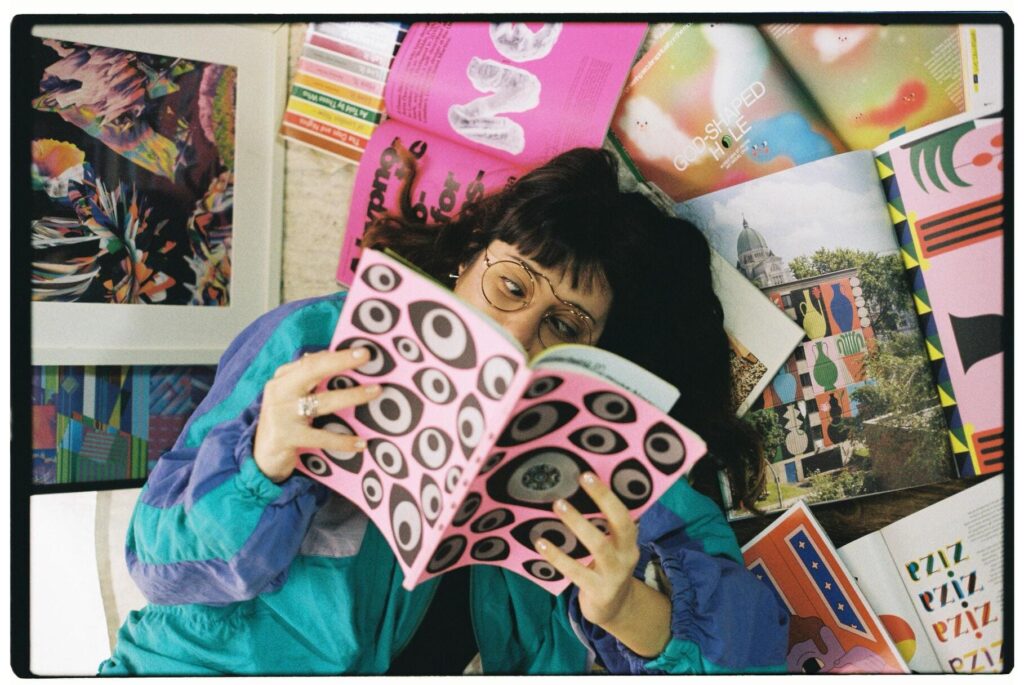
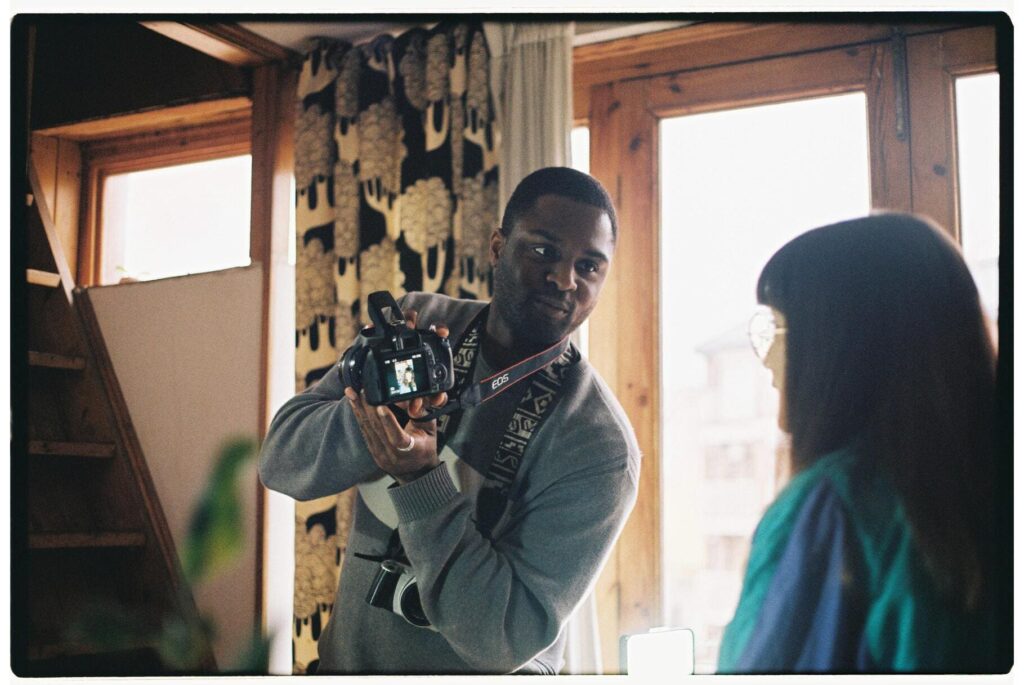
The Process & Creative Thinking
STUDIO AYL: Your work is based on storytelling. When planning a shoot, how do you balance being spontaneous with structure?
I believe that there should never be too much structure in a photoshoot. It is so important to let creativity flow and to be able to adjust when the perfect shot arises as we advance through the shoot. I like to always have a bit of a game plan, maybe some shots that we cannot miss, but then 80% of it is created by playing with what the subject is comfortable with and what we can create with the environment we find ourselves in.
STUDIO AYL: Analogue photography forces you to slow down and be intentional with each frame. Do you think that shift in mindset can benefit brands when it comes to their overall visual strategy?
Absolutely! As a photographer, I think there is a lot of benefit in realizing that you don’t need to take 1000 photos to get the perfect shot. A lot of the time, it’s about slowing down and making sure we only capture what is important and necessary. For a brand, I think this would translate into putting in the extra work when it comes to defining what they want from the images they are going to put into the world. I think it can force them to ask themselves the right questions: Who is this for? What emotions do we want to transmit? How will our audience receive this? Etc.
STUDIO AYL: The physicality of film—the negatives, the prints, the process—adds a different relationship to imagery. Do you think that translates into how people experience brands that use analogue photography?
While I think this statement is very true on the photography side, I don’t think this relationship is felt so strongly by people if they aren’t knowledgeable about analogue photography. I find it makes them feel a certain way, but a lot of times without being able to pinpoint why.
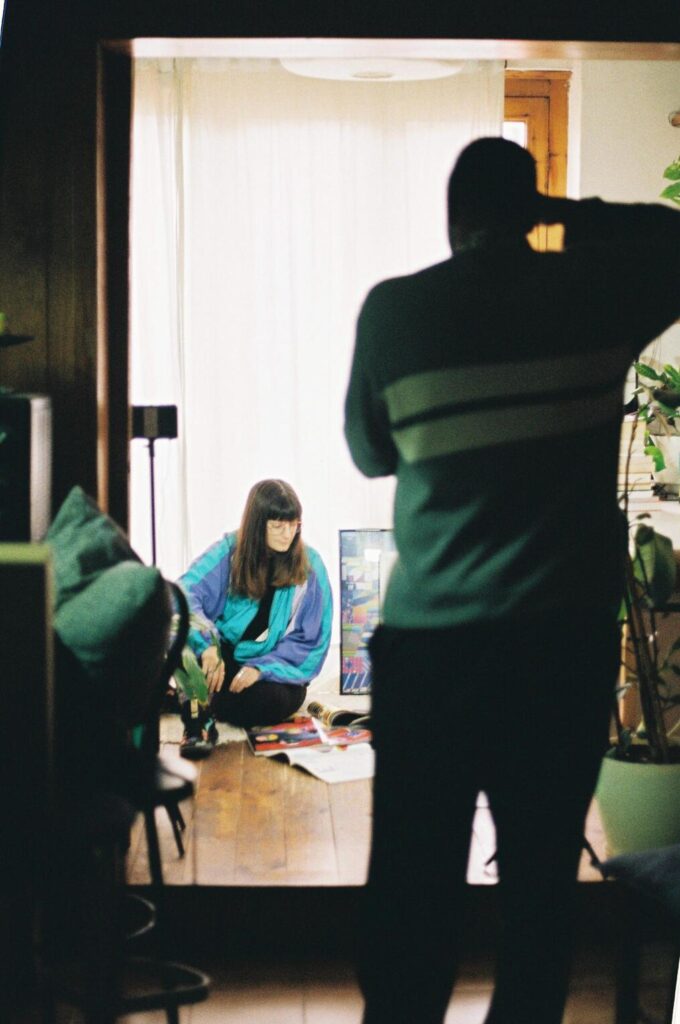
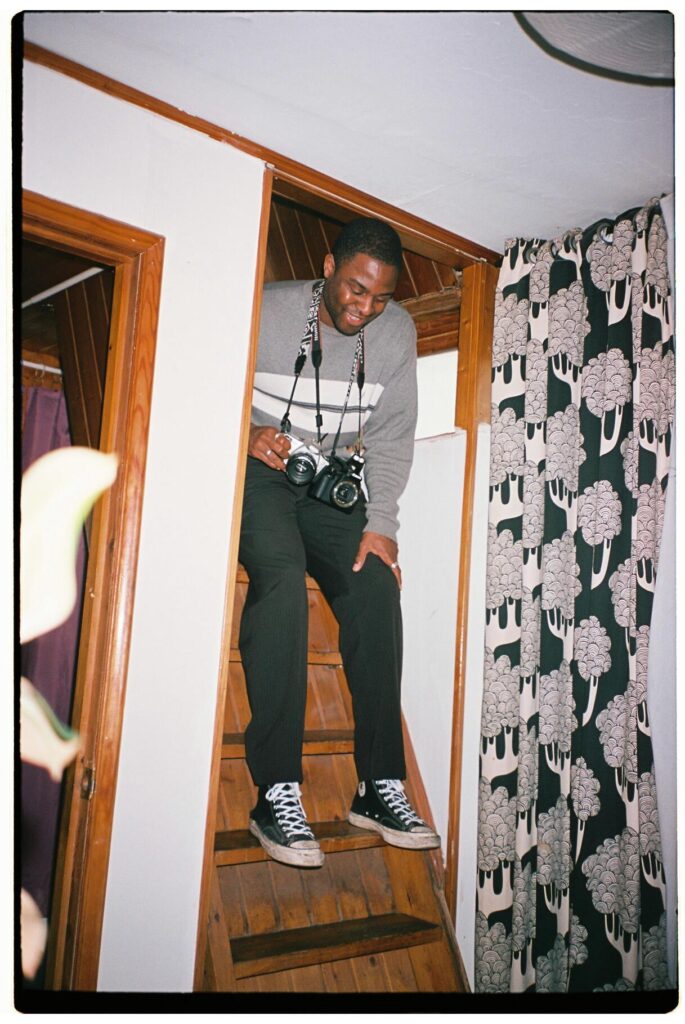
The Future of Film & Creative Collaboration
STUDIO AYL: There’s a recent trend around the use of analogue techniques in both photography and design. Where do you see this movement heading, and how do you think it might it influence branding in the future?
I think this trend will only grow bigger and stronger as AI gets better and better at imitating human art. Creatives of all kinds will return to more manual and analogue techniques in order to create things that are more human and truly speak to people. We will see brands dive deep into creating authentic images and experiences, as people will start to crave this more and more.
STUDIO AYL: If you could create an ideal brand collaboration—any industry, any style—what would it be, and how would film photography play a role?
I’ve played basketball most of my life, so I would naturally want to create something related to that. The dream would be to work on a sustainable sportswear brand and create a campaign promoting basketball while using sustainably made gear. I would love to collaborate with a graphic designer and create a mixture of film photography and graphic design to create something unique that would strongly stand out against what people are used to seeing. Film photography would add an authentic element that would evoke a strong reaction in the public. It would help solidify the authenticity of the brand’s claims and efforts.
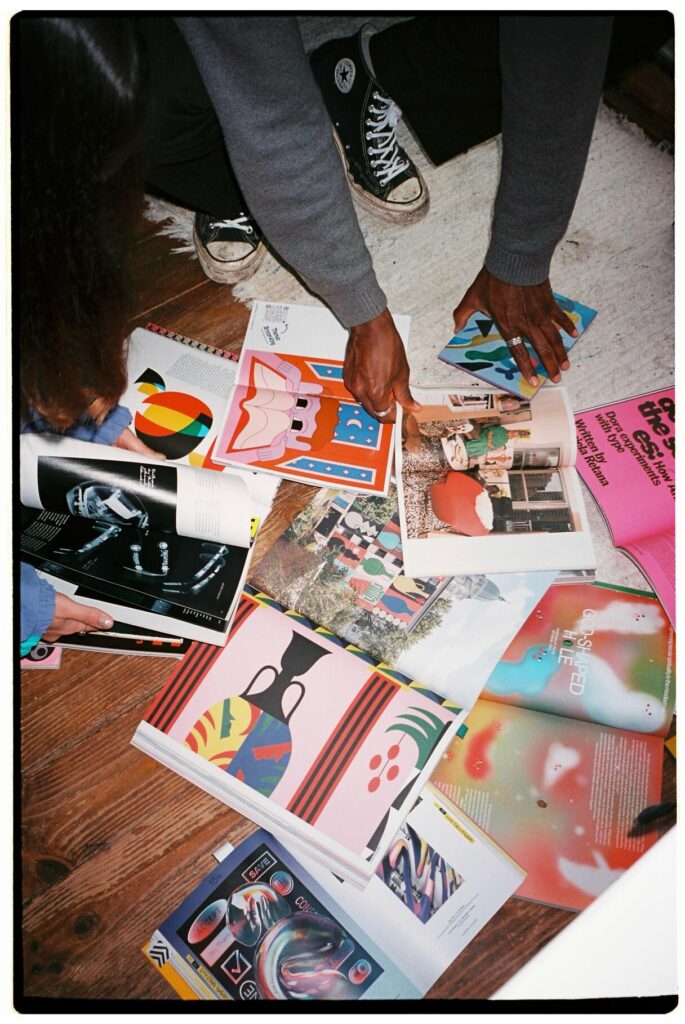
The Creative Brief
As a studio, we developed a creative brief. Here is a check of the key points that were helpful in preparing for the photoshoot and ensured that Calvin did his best possible work in the agreed timeframe:
- Detailed background about the studio: including services, values, target audience and vision.
- The goals of the photography project
- Why we consider that we need a photoshoot now (as opposed to in the future)
- Keywords we'd like to express: mainly adjectives to transmit
- Photographic styles: examples photographers' work that are aligned with what we'd like to achieve
- Moodboard: of specific images for reference, ideas for composition and colour palettes, as well as photographic treatment.
- Existing photos: mention what works and what doesn't for your brand now and your vision for the future.
- Important objects that represent you, your brand or project.
Art Direction
In order to develop the vision further, Calvin sent us a moodboard back, which helped him to convey his vision for the project. This was really useful, as not only could we see if he had understood our brief, we also got some new ideas and could further imagine the possible outcomes for the project. This step is very important, as sometimes what we (the client) might consider viable, isn't in real life settings, or for our budget. This part helps us to align our ideas, be realistic and keep focused.
Clothing
We aren't fashion designers, or fashionistas, so whilst we wanted to be authentic, it was hard for us to decide what we should wear for the photoshoot. Calvin asked us to send images of possible outfits, then he gave us some great feedback on what he thought would work well for the shoot.
Day of the shoot
Nerves! It's not easy for everyone to get in front of a camera. Even less so when you have bright lights shining on you from different angles. It's important that the photographer explains what they are doing at each stage, guides you in everything that you can't directly perceive: your posture, your position, your smile, where you're looking, if your shoulders are tense, and what other weird things you might be doing unconsciously.
We were extremely lucky for this shoot, that Fashion Photographer Kiana Beijleveld (Blao Film) acted as photo assistant and also took the opportunity to support the whole process with all the behind-the-scenes content featured in this journal post. The work of the photo assistant is extremely valuable, as their support allows the photographer to focus entirely on creativity and art direction.
📸 Typical Tasks on a Simple Shoot
Before the shoot:
- Prepping gear: Cleaning lenses, charging batteries, packing equipment.
- Setting up: Tripods, lights, reflectors, backdrops, etc.
- Location scouting: If needed, checking light, space, and logistics.
During the shoot:
- Lighting support: Holding reflectors, adjusting lights, managing modifiers.
- Grip work: Moving and securing equipment.
- Posing assistance: Helping subjects relax, fixing hair/clothing, or using a stand-in for test shots.
- Time management: Keeping track of shot list or schedule.
If it all seems a bit overwhelming and you're not sure where to start, get in touch and find out how we can support you to use photography for your brand. At Studio Ayl we collaborate with curated network of talented creatives to bring your vision to life.
All photos in this article are by @blaofilm ✨

 &
& 

 Linkedin
Linkedin just say hello
just say hello 